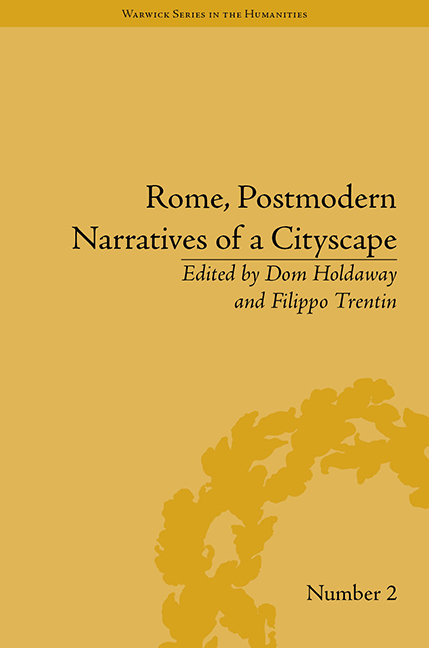Introduction: Rome, Postmodern Narratives of a Cityscape
Summary
It is history, above all, that one reads quite differently [in Rome] from anywhere else in the world.
J. W. GoetheUntil the mid-twentieth century, a vast majority of cultural representations of Rome within the Western collective imagination relied, almost incessantly, on notions or echoes of the classical city: from ‘Caput Mundi’ or the ‘Eternal City’, to the ‘Divine City’ of Christendom or the ‘City of Ruins’ of the Grand Tour. Throughout the decades these temporalities have been preserved and have coexisted, moulding the image of the Italian capital as though a palimpsest of written and re-written layers, whose original traces never completely fade. The metaphor of the palimpsest, bound to the pre-modern topography of the city with its synchronic coexistence of different historical layers, was established throughout the centuries by the descriptions of fascinated travellers, amazed by the persistence of historical buildings and remnants of history within Rome's cityscape. For Goethe, visiting Rome meant visiting history itself, while for Freud the urban fabric of ‘The Eternal City’ mirrored the inner structure of the human mind, in which layers of past memory-traces, conscious and unconscious, coexist.
After the Second World War, when Italy was integrated into the Western bloc and consequently pressured to conform to a neo-liberal capitalist model, Rome was drastically redefined by the contemporary economic and social upheaval and the growth and expansion that accompanied this period.
- Type
- Chapter
- Information
- Rome, Postmodern Narratives of a Cityscape , pp. 1 - 18Publisher: Pickering & ChattoFirst published in: 2014



